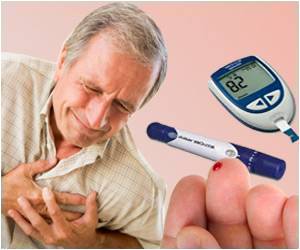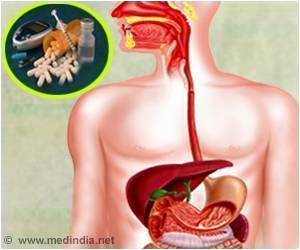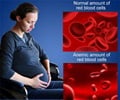Highlights
- A study by Johns Hopkins Bloomberg School of Medicine tested the efficiency of prediabetes screening using hemoglobin A1C test and blood sugar test.
- Hemoglobin A1C test found to predict the risk of diabetes associated complications better than blood sugar test.
- This study aids in consolidating evidence about the efficiency of hemoglobin A1C test in pre-diabetes testing.
Research study by Johns Hopkins Bloomberg School of Public Health on a test that determines pre-diabetes status based on Hemoglobin A1C level in the blood found that it is the best method of determining who will develop complications due to diabetes over the course of their life.Pre-diabetes is a condition in which the individual is at an increased risk for diabetes. However, the method of determining the condition has not been uniformly accepted. A case in point is that The American Diabetes Association recommends that hemoglobin A1C test or glucose levels could be used for the detection of pre-diabetes, while the WHO recommends the use of only glucose levels.
Bethany Warren, the lead author of the study and a PhD student in the Department of Epidemiology at the Bloomberg School said “The goal is to figure out who is at the highest risk of not only developing diabetes but of developing its serious complications including kidney disease, cardiovascular disease and even death. Hemoglobin A1C appears to be the tool that is best able to do that.”
Hemoglobin A1C Test
This test determines the glucose levels over a period of 2-3 months and, unlike, fasting and post prandial blood sugar test, this test does not require the patient to fast.
When the glucose level in your blood is high, it binds to the hemoglobin molecules. The hemoglobin A1C test is used to determine the extent of glucose bound to the hemoglobin molecule. The RBC lives for 3 months, therefore, the hemoglobin A1C test gives the blood glucose level for 2-3 months.
- Normal = <5.7 %
- Pre-Diabetes = 5.7-6.4%
- Diabetes = >6.5%
In hemoglobin A1C test, the blood glucose level over a period of 2-3 months is detected. Blood glucose test identifies more number of people with a high glucose level than hemoglobin A1C, however, not everyone will develop complications associated with diabetes.
Dr. Elizabeth Selvin, one of the senior authors of the study and a professor in the Bloomberg School’s Department of Epidemiology said “When someone is told they have pre-diabetes, we hope it will cause them to make changes to their habits in order to prevent the development of diabetes and its complications.”
- Identifying or terming someone’s condition as pre-diabetes will be like a wakeup call to adopt a healthier lifestyle.
- A diet that is rich in nutrients and low in carbohydrates and sugar may be adopted.
- Business travelers who eat food indiscriminatingly will become more conscious about their diet.
- Exercise will be incorporated into the daily schedule.
- Identifying the condition will aid in availing benefits from health insurance companies for further testing and diagnosis.
Atherosclerosis Risk in Communities Study
10,844 middle-aged adults were tested for blood glucose levels as well as hemoglobin A1C between the years 1990-1992. They were followed for a period up to 22 years to understand the likely predisposition for diabetes, cardiovascular disease and kidney. 7,194 adults were tested between 1996-1998 for fasting blood glucose and post prandial glucose. These study participants were followed up for a period of 16 years.
In people who were diagnosed with being in the pre-diabetes stage using the hemoglobin A1C test they were found to be at
- 50% more likely to develop kidney disease
- Two times more likely to develop cardiovascular disease
- 60% more likely to die
India is considered the Diabetes capital of the world and the numbers are continuing to rise. Identifying people at high risk for diabetes could help in limiting the alarming rise of diabetics.
Previous studies have shown that diabetes was considered a disease of the old about 30 years back, however, changing lifestyles and dietary patterns have increased risk factors for diabetes.
The International Diabetes Federation stated that the number of diabetics in India in the year 2015 was 40.9 million and the projected number for 2025 is 84 million. The WHO Health Organization has stated that the maximum increase of diabetics will occur in India.
The number of diabetics and the complications they undergo is a reminder of testing for pre-diabetes and the need to bring concrete changes to one’s lifestyle to prevent diabetes.
References:
- Diagnosing Diabetes and Learning About Pre-Diabetes - (http://www.diabetes.org/diabetes-basics/diagnosis/)
- Hemavathi Dasappa et al; Prevalence of Diabetes and Pre-diabetes and Assessments of Their Risk Factors In Urban Slums of Bangalore - (https://www.ncbi.nlm.nih.gov/pmc/articles/PMC4535103/)
- American Diabetes Association - (http://www.diabetes.org)
















